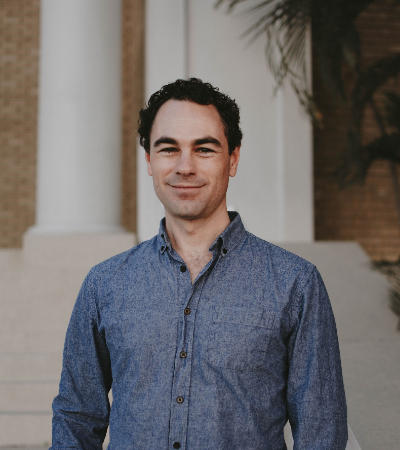Russia’s Latest Plan for Syria, Yemen Coalition Tearing Itself Apart, Economy and Syria on Agenda in Iran’s Election
Russian-backed De-escalation Zones Implemented in Syria
Published by The Lawfare Institute
in Cooperation With

Russian-backed De-escalation Zones Implemented in Syria
A new Russian-backed initiative to reduce the level of violence in hotspots in Syria went into effect over the weekend after being discussed at talks in Astana, Kazakhstan last week. The plan will establish “de-escalation zones” in four areas, including parts of Idlib, Latakia, Aleppo, Homs, Deraa, and Quneitra provinces, as well as East Ghouta, near Damascus. The zones include areas with al-Qaeda-linked extremist groups not covered by the previous nationwide ceasefire; the arrangement on de-escalation zones will also allow the Assad regime and its allies to target the Islamic State and al-Qaeda affiliates, but under the agreement, the regime and Russia will no longer conduct air raids in the designated areas. Under the arrangement, the regime is also supposed to allow humanitarian access and restore public utilities.
Russia, Iran, and Turkey signed on to the agreement, but rebel groups at the Astana talks have refused because they do not trust Iran as a guarantor. While the agreement is nominally in effect, many details of its implementation remain unclear and the full details of the plan have not been made public. Syrian Foreign Minister Walid al-Moualem said Monday that military police would monitor the implementation of the agreement, but that there would be no role for U.N. observer forces. U.S. Secretary of Defense James Mattis told reporters that the United States is still reviewing the initiative, but that there are many unanswered questions about its implementation. "Who is going to be ensuring they're safe? Who is signing up for it? Who is specifically to be kept out of them? All these details are to be worked out and we're engaged," he said.
If the agreement succeeds at tamping down violence in western Syria—a big “if”—it could shift the geography of the conflict. Moualem said Monday that he would like to redistribute more forces to eastern Syria to fight the Islamic State along the Syria-Iraq border; some regime forces operate in the area, but the fight against the Islamic State has largely been fought by the U.S.-led coalition and their local allies, the Syrian Democratic Forces. Moalem seemed to give some slight support to the SDF’s campaign, saying, “I think that what the Syrian Kurds are doing in fighting Daesh is legitimate in the framework of their keenness on preserving the unity and integrity of Syrian territories.”
If the agreement succeeds at tamping down violence in western Syria—a big “if”—it could shift the geography of the conflict.
The Kurds have been remarkably effective at securing some measure of support from parties on both sides of the Syrian civil war. They are the backbone of the U.S. force fighting the Islamic State and have the quiet support of the regime and Russia, which has a basing agreement with the Kurds in Afrin. This has put Turkey in a difficult position as the only government opposed to the Kurds’ current role; the Turkish military carried out airstrikes recently targeting Kurdish groups in Syria and Iraq and last week Turkish President Recep Tayyip Erdogan threatened more. The Kurds’ partners seem unmoved so far, and U.S. President Donald Trump is expected to commit to using Kurdish forces in the upcoming Raqqa offensive at a White House meeting with Erdogan later this month over the Turkish president’s objections.
Tension between United Arab Emirates and Yemeni Government Leads to New Push for Southern Secession
While most of foreign attention on the Yemeni civil war has been focused on the Saudi-led coalition’s advance along the Red Sea coast toward Hodeida, a different dynamic in the conflict has divided the coalition behind the frontlines. In recent weeks, tensions have escalated between the government of President Abdu Rabbu Mansour Hadi and the United Arab Emirates, which has provided security in the displaced government’s main foothold in the country, the city of Aden. The Emirates has sponsored and trained much of the reconsolidated Yemeni military, but the Hadi government has chafed at what they say has been an overbearing presence. At a meeting in February, Hadi reportedly complained to Mohammed bin Zayed, the crown prince of Abu Dhabi and a senior military official, that the Emiratis were acting “like an occupation power in Yemen rather than a force of liberation.”
Those tensions came to a head at the end of April when Hadi sacked several government officials with close ties to the UAE, including Major General Aidarous al-Zubaidi, the popular governor of Aden. Zubaidi’s firing particularly incensed members of Yemen’s southern secessionist movement. Saudi Arabia’s King Salman intervened to calm the growing split within the coalition, but at a meeting in Riyadh, Hadi told him the UAE was trying to build an “alternate legitimate leadership” and had encouraged the officials to disregard his directives.
Hadi’s move to drop officials close to the Emiratis was intended as a way to reassert his control, but instead it has only displayed how little authority he has—even in Aden, which is supposed to be where the government’s control is strongest. Last Thursday, thousands of Yemenis rallied to protest Zubaidi’s ouster and Zubaidi promised to lead a renewed push for secession. "May 4th represents a turning point in the Southern nationalist movement's struggle for independence,” he said.
Hadi’s move to drop officials close to the Emiratis was intended as a way to reassert his control, but instead it has only displayed how little authority he has...
Former U.S. Ambassador to Yemen Stephen A. Seche thinks that the growing conflict within the coalition reflects a shift in Emirati strategy. “As the war in Yemen drags on with no apparent end in sight, the Emiratis appear increasingly determined to shift their focus from short-term tactical advantage to long-term strategic stabilization,” he wrote last week. “As a result, while stasis seems to prevail on the battlefield, the UAE is moving ahead with plans that appear to support a much longer-term investment in Yemen, one that may include redrawing the map of the country.”
Iran’s Presidential Campaign Highlights Frustration with Economy, Syria Intervention
Iran’s intervention in Syria to support President Bashar al-Assad has emerged as a surprising issue in Iran’s presidential campaign. Incumbent President Hassan Rouhani is trying to win a second term against a field of five challengers. Many analysts anticipated that the economy would be his greatest weakness; sanctions relief from the Joint Comprehensive Plan of Action has failed to generate the recovery he promised. But there has also been a remarkable current of discussion about Iran’s role in Syria.
Last week, a court in Isfahan province said it would bring charges against Gholam Hossein Karbaschi, a former mayor of Tehran, for criticizing the intervention while campaigning for Rouhani in the province. “We also want the restoration of peace in Syria, Lebanon, Yemen and all these regions—where the oppressed are defended and the Shiites are empowered," he said at the event. "But is this achieved only through giving money, purchasing weapons and killing and beating? ... Let us use the power of diplomacy to resolve regional issues.” The court will argue that Karbaschi denigrated Iranian troops who have died in Syria. As the Middle East Institute’s Ahmad Majidyar notes, the controversy comes soon after a video showing Iranian college students confronting their professor about the justifications for the intervention went viral, and polls in recent months have shown a precipitous decline in support for Iran’s involvement in Syria. “Karbaschi’s public denunciation of Iran’s military role in Syria may be just election sloganeering, but it shows the growing disenchantment of the Iranian public with the regime’s involvement in regional conflict,” Majidyar writes.
The economy remains a Rouhani’s biggest weakness, though. At the first debate, Mohammad Bagher Ghalibaf, the hardline current mayor of Tehran, hammered Rouhani over a promise to create four-million new jobs—a statement that Rouhani did make during the 2013 campaign, but with large caveats. The issue dogged him on a sensitive presidential trip this past weekend. Rouhani traveled to Golestan province to visit with the families of victims of a deadly mine collapse, but was confronted by protesters who halted his car and chanted slogans protesting the paucity of job opportunities and unsafe working conditions. Rouhani is generally favored to win re-election later this month, but Ghalibaf is a popular contender.





